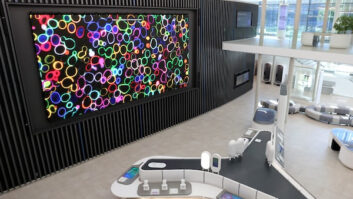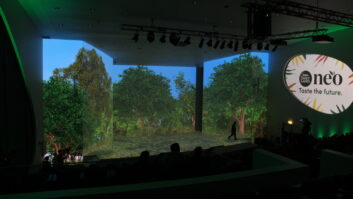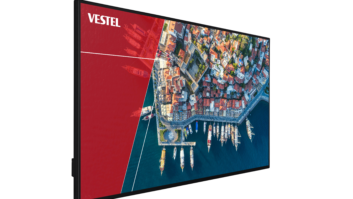Despite widespread reference to the latest video format as ‘4K’ or ‘UHDTV’, there is some confusion between the different resolutions, frame rates and colour quality currently on offer. Manufacturers throughout the professional AV industry already offer products that are, in their words, able to handle 4K UHDTV. But not all 4K is the same, a fact that has the potential to create problems: not just in the distribution and display of signals, but in loss of image quality – both of which can affect the implementation and overall satisfaction of the installed system.
Firstly, the terminology itself is unclear. UHDTV, ultra-high-definition TV refers to two new and vastly different video formats: 4K and 8K. These figures refer to the horizontal resolutions of the displayed images and there has been a shift in the naming convention: the emphasis has moved from vertical (picture lines) to horizontal (columns). For now, only 4K is viable, with 8K seen as the eventual successor.
Differing resolutions
As with previous picture formats there is a variation of aspect ratios within the 4K category depending upon application. Digital cinemas have adopted a resolution of 4096 x 2160 pixels established by the Digital Cinema Initiative at an aspect ratio of 19:10. A slew of DCI-compatible projectors is currently available with this native resolution from the major manufacturers, including Barco, Christie, NEC, Sony and Digital Projection.
The broadcast industry has adopted a different resolution, 3840 x 2160, with an aspect ratio at the more familiar 16:9 format. Consequently LCD displays for home and commercial use are manufactured to this format, rather than the DCI version of 4K. Leading LCD manufacturers, such as LG, NEC, Panasonic, Samsung and Sony, ship 4K displays at sizes from 40in to over 100in.
However, resolution and pixel formats are not the whole story. Images are painted onto a display screen at a specific rate, the refresh rate. Faster rates are better; reproducing moving images more realistically and reducing motion blur.
While devotees of celluloid film advocate 24fps (frames per second) for its cinematic effect, there is a growing tendency towards faster rates. As a result, UHD frames rates are a minimum of 30fps with 60fps and above preferred, but these come at a cost: faster frame rates require greater transmission bandwidth.
Also, the method by which colour images are converted to digital signals greatly affects the clarity and quality of the image. The process used since the earliest days of colour television is chroma subsampling, in which luminance and colour information are separately sampled and transmitted. This is a compression technology that allows the signal to pass through limited transmission bandwidth, and, as expected, delivers a better quality image with greater bandwidth.
Required bandwidth
These three characteristics combine to influence the quality and bandwidth requirements of 4K UHD video signals. Unfortunately, the most desirable combination for general, non-cinematic, applications (3840 x 2160 @60fps, 4:4:4 colour subsampling) requires a bandwidth of 18Gb/s.
This is beyond the specification of HDMI 1.4 so most currently available displays are limited to a lesser quality: 30fps and 4:2:2 subsampling. HDMI 2.0 should improve the situation by allocating sufficient bandwidth, and large screen displays are currently emerging with this interface.
The situation is less encouraging on the source side. For entertainment applications, there are few native 4K UHD sources: TV set-top boxes and Blu-ray players are limited to 1080p. Netflix is currently the only 4K service available. although more online transmissions should come onstream in 2015.
Professional media players for digital signage and event projection are, however, more abundant with manufacturers such as Brightsign, Onelan, Nexcom, AOPEN, Green Hippo, iBASE and 7th Sense recently adding 4K players to their line-ups.







